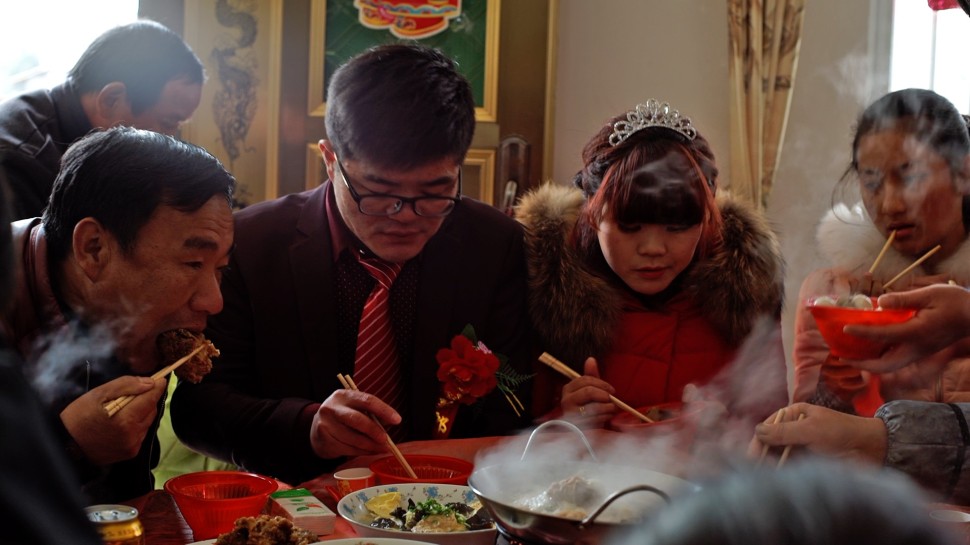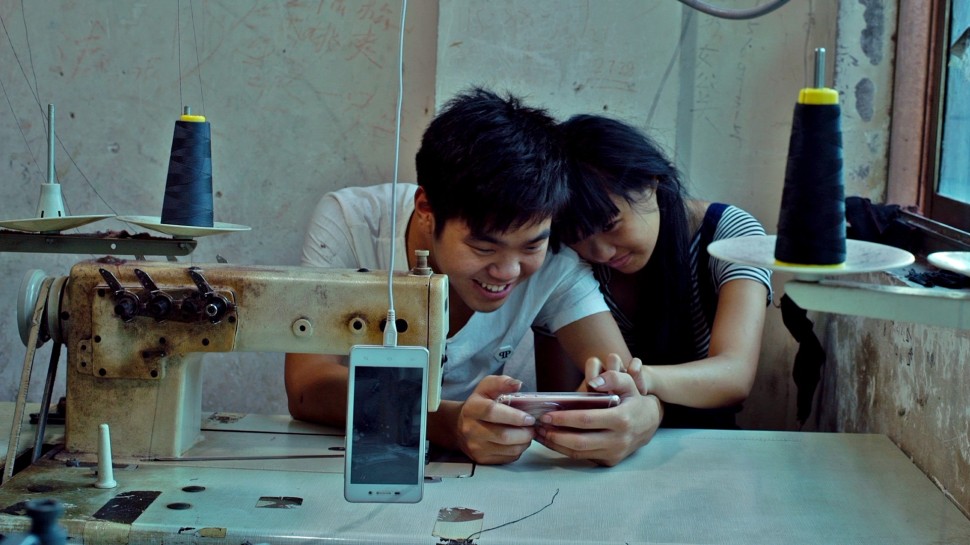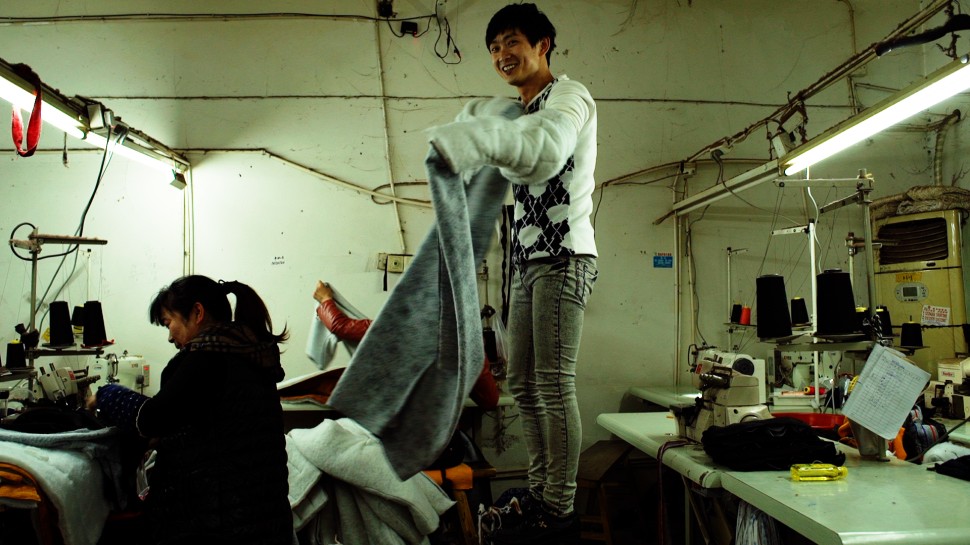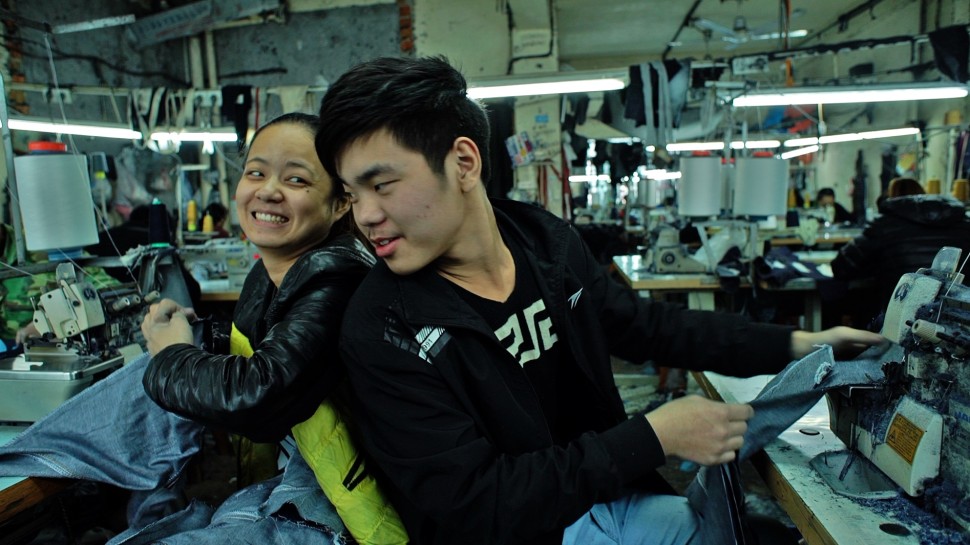



Wang Bing’s Youth Trilogy
More than two decades after making his monumental West of the Tracks (2002), documentary auteur Wang Bing (b. 1967) has released a new cinematic fresco of Chinese workers. Whereas his debut work memorializes the declining Socialist industrial complex in Northeast China and its aging employees, the Youth trilogy chronicles the plights of young migrant workers struggling with the vagaries and pressures of a free capitalist market. Between 2014 and 2019, Wang Bing and his crew shot around 2,600 hours of footage in the garment-making township of Zhili, near Shanghai, with hundreds of thousands of seasonal laborers from all over the country sewing children’s clothes in some 18,000 workshops. The three installments of Youth—Spring, Hard Times and Homecoming—premiered in competition at the Cannes, Locarno and Venice film festivals, respectively. Taken together, this documentary trilogy not only provides a nuanced, empathetic and critical look at China’s fashion industry, but could also inspire in its audiences alternative experiences of time, space and the material fabric of our lives.
Like the decentralized organization of Zhili’s workshops, Youth has a dispersed patchwork structure that spends about twenty minutes per vignette focusing on a handful of characters and their interpersonal dramas. Mostly in their late teens and twenties, the young workers banter, flirt, quarrel and sing along with pop songs from their phones over the relentless whirring of their sewing machines. Under harsh fluorescent lighting that makes it hard to tell day from night, they stitch jeans, lace dresses and padded jackets with breathtaking pace and dexterity. Earning a dollar or two a piece, they engage in protracted rate negotiations with bosses who complain about bad business, so the workers often take what they are offered just to get paid at all. Many of them seem to be in love, but when it comes to marriage and children, they and their families must make savvy, pragmatic calculations for their uncertain futures.
A master of slow cinema, Wang Bing uses time to acculturate into the lives and environment of his subjects, whose typical workday far exceeds the ten-hour duration of the entire film trilogy. Building rapport with their subjects over days, months and years, Wang Bing and his crew earned their trust enough to capture many candid conversations and intimate scenes. Back in their messy dorms and on flimsy beds, workers confide their aspirations and anguish to each other and the camera, sometimes telling the cameraperson what to film and where. Over the Lunar New Year, the film crew took long train and bus rides with workers back to their home villages, meeting their aging parents, taking quick tours of newly built homes and strolling in the vast landscape of the countryside. Neither looking down nor up at his subjects, Wang Bing shows us the world through their eyes, giving us a vicarious sense of the joys and sorrows, energy and exhaustion, conflicts and camaraderie, mobility and entrapment of China’s migrant laborers.
The patience and concentration that Wang Bing’s work demands of its audience are similar to the quality of attention expected of readers of nineteenth-century realist novels filled with numerous minor but complex characters and mundane but revealing details. Perhaps even more than other works in his his oeuvre, the Youth trilogy cultivates in its audience new habits of perceiving the material fabric of our everyday lives. When dressing ourselves and our children, we might turn our shirts, pants and jackets inside out to feel the seams and imagine the hands that stitched them together. We might listen for the hum of the sewing machine and the sigh of workers who had been denied the raise of a few pennies on the piece rate despite the difficulty of the intricate designs. We might recognize that our consumer desire to maximize the quality while minimizing the cost of our everyday clothes is in direct contradiction with the young workers’ labor conditions and financial aspirations. In the film, the turning sewing machine is reminiscent of a turning projector, and the work of cutting and sewing is akin to cinematic editing and suturing. Ultimately, our clothing might become a movie screen onto which we can project the invisible labor that went into its making at another end of the world. – Jie Li





